It used to be that to publish a book you had to find an agent and publisher, and jump through a BUNCH of hoops to get it on the shelves.
The whole process could take many months or even years…and in the end, the financial payoff was often minimal.
This all changed with the introduction of the eBook.
To be clear, an eBook is a book that can be read on an electronic device like a computer, phone or eBook reader (like a Kindle or Kobo).
According to Author Earnings, 55% of all online books sold in 2017 were eBooks. Print books were pretty far behind, at 39%.
[click_to_tweet tweet=”According to Author Earnings, 55% of all online books sold in 2017 were eBooks. Print books were pretty far behind, at 39%.” quote=”According to Author Earnings, 55% of all online books sold in 2017 were eBooks. Print books were pretty far behind, at 39%.” theme=”style6″]This represents a HUGE opportunity for would-be authors.
Keep reading, if you’re looking to:
- increase your authority in your niche,
- transition out of your service-based business, and/or
- stop trading time for money
This post is going to take you step by step through the process of researching so you can write, publish and sell your first eBook. We’ll tackle each aspect of the process, including:
- Why you should write an eBook
- Where to sell your eBook
- Choosing your topic
- Validating your eBook topic
- Writing your eBook
- Marketing your eBook
Why You Should Write an eBook?
Oh, there are so many great reasons!!!
If you’re reading this post, you probably already know many of the benefits of writing, publishing and selling an eBook.
But briefly, some of the main benefits are:
- It positions you as an expert in your niche. Writing an eBook gives you the opportunity to share your knowledge with the world. And writing an incredible eBook establishes you as someone who really knows what they’re talking about!
- It’s passive income. We can’t forget this benefit, right? Selling an eBook is a great way to stop trading time for money – meaning you write it once, and then sell it again and again.
- You can use it as a lead magnet. Giving away a free eBook is a great way to get people into your sales or marketing funnel. Offer a free eBook in exchange for an email address so you can continue to connect with people who are interested in what you have to offer.
- It’s easier, faster and often more lucrative than writing a print book. I’ve written both paper books and digital books, and I can attest to this! The barriers to writing and selling eBooks are low, meaning there’s little to no risk involved. You can literally write an eBook one week, and start selling it the next.
- It’s a great way to test the market for bigger, more expensive products. In terms of creating and selling digital products, eBooks are a GREAT place to start. But many entrepreneurs eventually move on to selling even more lucrative digital products – like membership sites and online courses. Selling an eBook is a great way to make some passive income while also seeing if there’s a market for these pricier products!
Choosing the Topic for Your eBook
Here’s where we really start getting into the nitty-gritty of the whole process.
Choosing your topic may not seem like a really big deal, but the success of your eBook can literally 100% hang on this decision.
Here are some examples of how NOT to choose your eBook topic:
- Choose a topic because you’ve seen other eBooks on the topic
- Choose a topic just because you think it’s really awesome
- Choose a topic because you *think* your audience really cares about it
- Choose a topic because your gut tells you it’s the right one
I know these might seem a bit silly and obvious, but you wouldn’t believe how many entrepreneurs fall into the trap of choosing a topic based on what SEEMS to be a good idea!
Instead, I’d strongly advise you to research, research, and then research some more to find out what your audience ACTUALLY wants to know about.
This could include surveying your audience to find out their biggest struggles or questions, using some basic keyword research to find out if people are looking for info on your topic, and analyzing your blog and social media analytics to find out which topics have done well in the past.
I’ve just barely scratched the surface here…but if you want to really dig in, watch out for my upcoming blog this month, Tips to Choosing a Book Topic that Your Target Audience Will Want to Read.
Basically, my advice is don’t just assume you know what your audience wants! Your instincts can be a great place to start, but use your sleuthing skills to confirm that your topic is as awesome as you think it is!
Which leads me to a very important step that many would-be authors skip…
Validate Your eBook (BEFORE you write it!)
Validation is a strategy I always recommend using before creating a digital product. ESPECIALLY when creating a product that will require a big investment of time or money.
Honestly, if you’re thinking of whipping out an eBook in a couple of days, you can probably skip this step.
But if you’re going to be investing lots of time, effort and money (and blood, sweat, and tears!) into the process, definitely start here.
Validating your eBook simply means taking steps to ensure people actually want to buy it…before you write it.
Here are some of my favorite validation strategies!
1. Start a Waitlist
Via Face Yoga Method
Create a simple opt-in page for your eBook, briefly describing the main problem your book will help people solve.
Let people know that if they sign up for your wait list, they’ll be the first to be notified once it launches…and that they’ll receive a special wait list discount.
The nice thing about a wait list is there’s really no risk to you. If you get tons of people signing up, you know you have a great idea. And if you don’t? No problem. Back to the drawing board, no harm, no foul.
2. Check Out What the Competition is Selling
Many entrepreneurs/authors are scared of this step: they think that if their closest competitors are already selling a similar product, there won’t be room for theirs.
But in many cases, the opposite is actually true. If your competitor is selling an eBook, this is a confirmation that there’s likely a market for other eBooks in your niche.
In most cases, you probably won’t want to write your book on the exact same topic.
BUT, there is an exception to this: If your competitor is selling their eBook on Amazon, check out their Amazon reviews. If they have tons of negative reviews, look at the comments to find out what people dislike about the book…and what YOU can do better in your book!
3. Pre-sell Your eBook.
This is one of the absolute BEST ways to validate your book because you’re actually selling it before you’ve written a single word. There are a couple of ways you can do this.
First, you can start a Kickstarter campaign which you can then promote to your audience. People would donate to your campaign, and if you reach your financial goal, your book goes ahead.
Another strategy is to create a pre-order landing page for your eBook. Describe your book, give people a special deal for pre-ordering, and include a “Pre-order now” button. Make sure you let people know that if you don’t reach your minimum number of pre-orders, the book won’t go ahead…and that you’ll promptly refund their money.
Write Your eBook
Here’s the part you’ve probably been waiting for, the first step in the write, publish and sell your eBook stages.
At this point, you have a topic and have validated that there’s a market for your eBook. You may even have pre-sales!
Now’s the time to settle in and actually write your book. This section will take you to step by step through a process you can use to bring your eBook to completion.
Step 1: Create an Outline
Even if you already have a pretty good idea of what you’re going to write, I’d recommend starting with an outline.
Sometimes, it’s difficult to see gaps in your ideas until you have your points down on paper.
One of the best ways I’ve found of creating an outline is to use Pat Quinn’s “sticky note” method (he talks about it in his podcast on building an online course…but the idea works for any type of digital product!).
Here’s how it works: Set some time aside – sans distractions – to brainstorm subtopics for your book. Grab a sticky pad and start writing: include one idea/subtopic on each post-it note. No idea is too silly!
Give yourself about 10 minutes to go through this process. Remember not to judge or critique your ideas!
Once the 10 minutes is up, it’s time to organize your ideas. Start by pulling out “big idea” topics that would work well as chapter topics. Then under each of these chapter notes, you can stick sub-topics. And if you find some notes that don’t really make sense anywhere? Chuck ‘em!
I find seeing your topics laid out in this format can be really helpful. Using sticky notes also means you can easily move (or remove) ideas if you change your mind!
Step 2: Write Your eBook
Use a tool like FocusWriter to remove unwanted distractions
I find most writers take one of two approaches to writing: either writing and editing as they go, or writing a super-rough copy, then going back later to edit.
Either way works just fine…it’s mainly a matter of personal preference. In either case, having your sticky note outline will make things go a whole lot faster and easier.
When writing your book, make sure you’re free of distractions and interruptions.
If you’re the type of person who needs some structure when you write – and who obsessively reads and re-reads every sentence as you go – consider using a free tool like BlindWrite. It asks you for your topic and how long you want to write for, then gives you a blank canvas on which to write.
And the thing that makes it unique? It records what you write, but blurs it out so you can’t see it. This means no more wasting time obsessing about what you’ve just written!
Another great tool is FocusWriter, pictured above. It works by removing all distracting menus and other elements from your screen so you can focus on one thing, and one thing only: writing.
And the best part? It’s free too!
Step 3: Come up With a Title
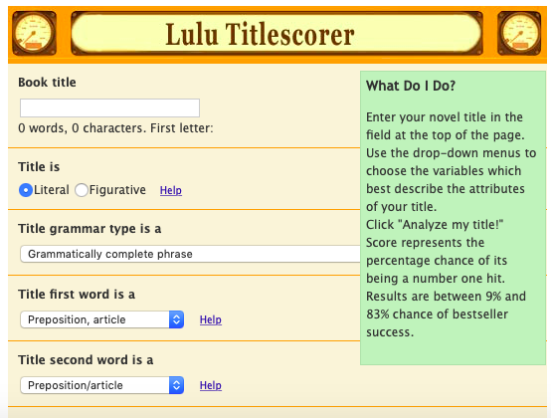
Use the Lulu Titlescorer tool to put your title to the test!
You’ll notice I’m including this step AFTER you’ve written your book, and not before. I find that sometimes it’s nice to know exactly what problem your book solves – and how it solves it – before finalizing your title.
That said, you do you! If you have a great title right off the bat, there’s nothing wrong with naming your book before you write it.
Okay…so, how do you name an eBook so it stands out, ranks in the search engines, and accurately reflects what your content is about?
According to the Kindlepreneur, when naming your eBook, you should consider 4 factors:
- Intrigue: Does it make readers stop and think? Is there an element of mystery? Does it stand out among more generic titles? (e.g., “Pride, Prejudice, and Zombies”)
- Discoverability: Are you using keywords to get found on Amazon or Google? (e.g., “How to Write a Children’s Book”)
- Genre mesh: Does it make sense given your genre? (e.g., “Slasher Girls & Monster Boys” makes sense in the horror genre, but not the romance genre)
- Informative: Does it tell the reader what your book is about, while still being interesting or unique? (e.g., “How to Lose Friends and Alienate People”)
Bonus Tip: Once you’ve come up with a working title, pop it into the Lulu Titlescorer tool to analyze how successful it will be!
Step 4: Format Your eBook
Calibre is a free tool to help you convert and format your eBook
If you want people to be able to read your eBook on a phone or e-reader, you’ll need to make sure it’s formatted for those devices.
The most common eBook formats are epub, mobi, pdf and AZW/AZW3.
There are two ways to go about formatting your book into one (or all) of these formats: hire someone to convert your doc (e.g., Word doc) or do it yourself.
Generally speaking, I recommend outsourcing this to an expert. It doesn’t cost much, and it will save you a TON of headaches!
But if you DO want to try your hand at formatting it on your own, check out Calibre – an open source, free eBook management tool.
I won’t go into detail here, as I’ve already written an entire post to help you with this! To find out exactly what your options are for formatting your eBook, see my upcoming post, How to Format an eBook for Publishing: 6 Options Described.
Step 5: Design Your eBook Cover
This is SUCH an important step! Your eBook cover is arguably THE most important element for grabbing people’s attention and getting them to actually buy your book.
You have three options in terms of designing your eBook cover: the DIY route, buying a premade cover or having a cover designed for you.
We’ll take a look at each of these options below.
Option 1: Create Your Own eBook Cover
It’s easy to create an eBook cover using Canva
Fortunately, it’s easy to create a professional-looking cover using a free tool like Canva or Adobe Spark. They both have lots of covers to choose from (especially Canva), and both allow you to customize your:
- Layout
- Fonts
- Colors
- Graphics
- Elements
- Background
- Text
Simply choose a template to work off of, make any changes you want, and download a copy to your computer. It’s that easy!
Option 2: Use a Premade eBook Cover
Via GoOnWrite
If you don’t trust your own design skills and don’t want to spend a lot of money, this is a great option.
It involves buying an eBook cover that has already been designed and getting it customized with your book title, tagline, and name.
For example, for just $30, you can buy a pre-made cover from GoOnWrite. Once you’ve selected and paid for your cover, they’ll add your title and name, and voila! You’re good to go.
And once you’ve bought a cover, it’s out of circulation…meaning no one else can use that cover design ever again.
Option 3: Get Your Cover Professionally Designed
Via BookBaby
If you have no idea what type of cover you want – or want a custom cover that will knock the socks off your readers – this may be the option for you.
It’s definitely the most expensive option of the three; but if you’re serious about making money from your eBook, it’s definitely something to consider.
Some of the most popular cover design services are BookBaby (starts at $249), eBook Launch (starts at $349) and Damonza (starts at $495).
How to Market Your eBook
Now for the pièce de résistance!
With your eBook written, formatted, and ready to go, it’s time to actually start selling it.
This final section will give you 4 of the best strategies for getting your book in front of the people who need it!
1. Sell it on Major eBook Marketplaces
Use Kindle Direct Publishing to get your eBook up on Amazon, fast!
If you haven’t already built up a big audience of your own, this is definitely an option to consider.
Having your eBook up on big marketplaces like Amazon, BarnesandNoble.com, and Kobo means you get automatic exposure to millions of potential buyers…and while it can take some time and skill to get your eBook ranking highly on these platforms, your hard work can pay off BIG time!
Fortunately, each of these sites has made it fairly quick and painless to publish your book on their platform:
Go here to starting selling your eBook on BarnesandNoble.com
Go here to start selling your eBook on Amazon
Go here to start selling your eBook on Kobo
While it’s free to list your eBook on these platforms, keep in mind that they will take a cut of your sales…so be sure to read the fine print!
2. Create an eBook Landing Page on Your Blog
Via Desire to Done
If you’re going to be selling your eBook directly on your website or blog, you’re definitely going to need a dedicated landing page for your book.
This page will be where you direct visitors to find out more about your book or to buy their own copy. This is the link you’ll promote via your email list, social media, and blog.
At a minimum, it will include all the details of your book, your book cover and of course a “Buy now” button.
You’ll likely also want to include some additional info to convince visitors to buy. Info like:
- Testimonials
- A video introducing yourself and your book
- A money-back guarantee
- The story behind why you wrote your book (your “origin story”)
For more tips, check out my post, 7 Steps to a Highly-Converting Opt-in Page (while you’re not creating an opt-in page, the basic principles are the same).
3. Create an eBook Sales Funnel
Create a freebie to help promote your paid eBook! Via Wellness with MaryAnne
This is the #1 strategy I recommend, and is the one I use for my own digital products!
Here’s how it works. First, create a free short eBook, guide, checklist or worksheet on a similar topic to your paid eBook.
For instance, if your eBook is “50 Tips and Tricks to Landing Your Dream Job”, your freebie could be a short guide, “10 Questions to Help You Figure Out Your Dream Job”.
Be sure to reference your paid eBook in your freebie! You may also want to offer an exclusive discount to those who have downloaded your free product.
Next, create a simple opt-in page for your freebie. This will be the page where people will learn more about your freebie and will enter their email address in order to download it.
Now, promote this opt-in page through all the usual channels: social media, your email list, your blog, FB ads, etc.
Even if people don’t buy your eBook immediately, they’re now on your list. This means you can continue to build a relationship with them that will be mutually beneficial over the long haul!
4. Create an Affiliate Program for Your eBook

Want other people to do the hard work of promoting your book for you? Then this may be a great option for you!
Because there are very few hard costs associated with selling an eBook, you can afford to be generous with your affiliates. While a typical affiliate commission for a physical product is around 10%, commissions for eBooks tend to be somewhere around 50%.
And fortunately, it’s super simple to create an affiliate program using a tool like e-Junkie or ClickBank.
For a small fee ($5/month for e-Junkie and $1 + 7.5% per sale for ClickBank), these sites let you create and manage a simple affiliate program for your eBook.
Both sites will also list your eBook in their online marketplace, giving you instant exposure to thousands of potential affiliates!
Final Thoughts
I hope this post has gotten you excited to write, publish and sell your first eBook.
Whether selling eBooks is your end game – or is just the first step in building an online passive income empire – this post should give you the info and resources you need to get started.
Looking for more help? Check out my post on 17 Mistakes to Avoid as a New Author and coming soon is The Top 14 Essential Resources for eBook Publishing.
Tell me: What’s next for you? What’s your eBook going to be about? Be sure to come back and post a link to your eBook landing page once it’s done!
About Author
Kim Garst
Kim Garst is a renowned marketing strategist and speaker who is trailblazing the use of artificial intelligence in digital marketing. With over 30 years of experience as an online entrepreneur, Kim helps entrepreneurs grow their business and authority online by using AI technology. She is leading the way with proven AI frameworks that help entrepreneurs build authority in their space.
She is keynote speaker and an international best-selling author of Will The Real You Please Stand Up, Show Up, Be Authentic and Prosper in Social Media.
Named by Forbes as a Top 10 Social Media Power Influencer, Kim is well-known for her skill to simplify complex technology and make the use of AI understandable for business growth. Her relatable, actionable advice helps guide new entrepreneurs to harness the power of AI to succeed in digital marketing. Kim is leading the way in combining human and technological skills to create a new model for AI-powered marketing.

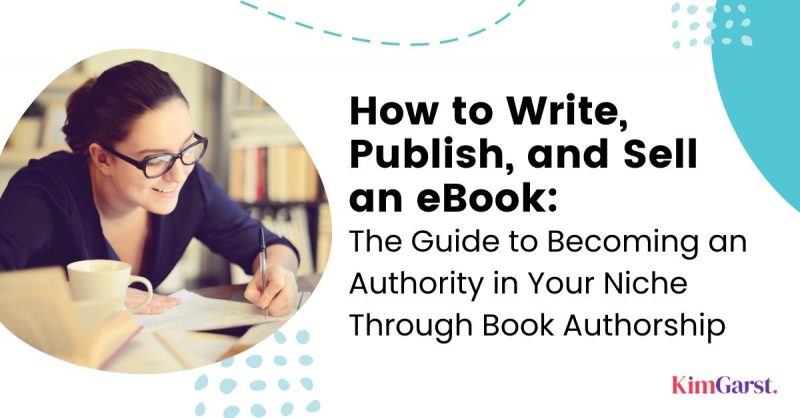
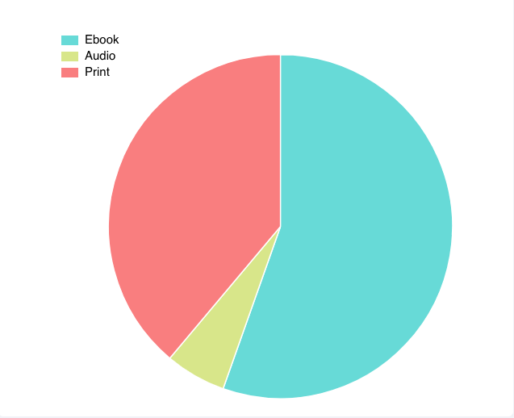
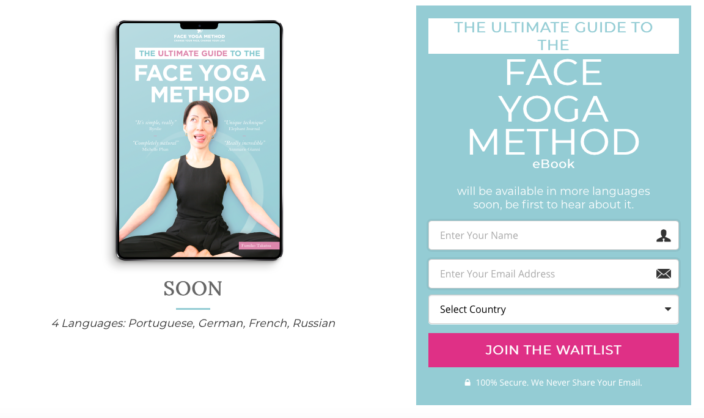
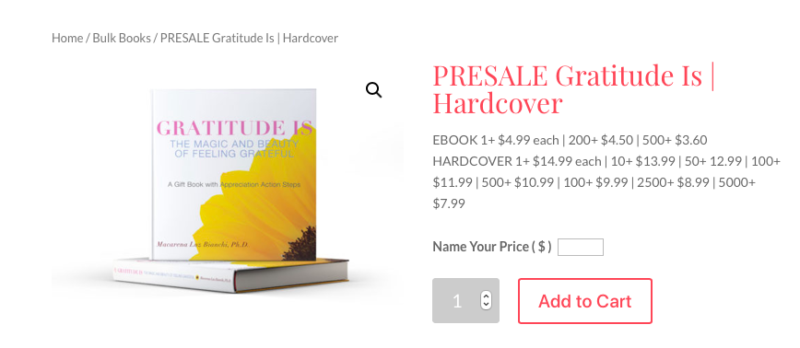

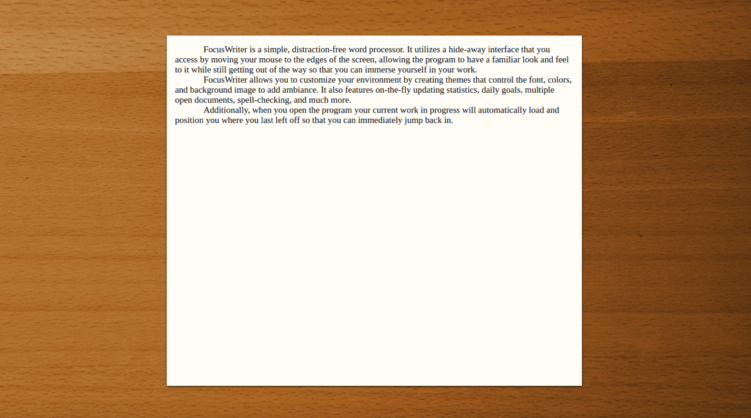
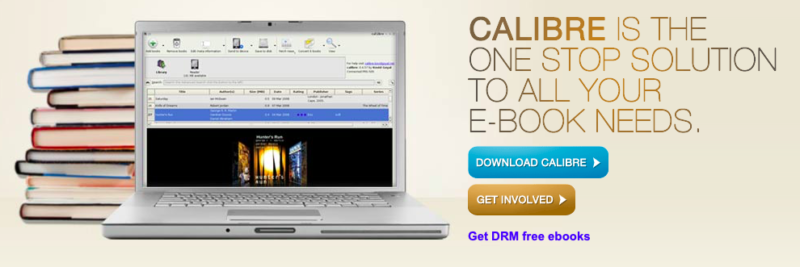
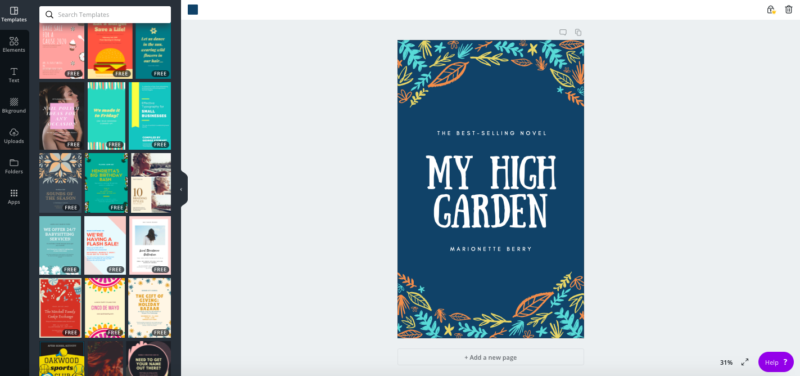


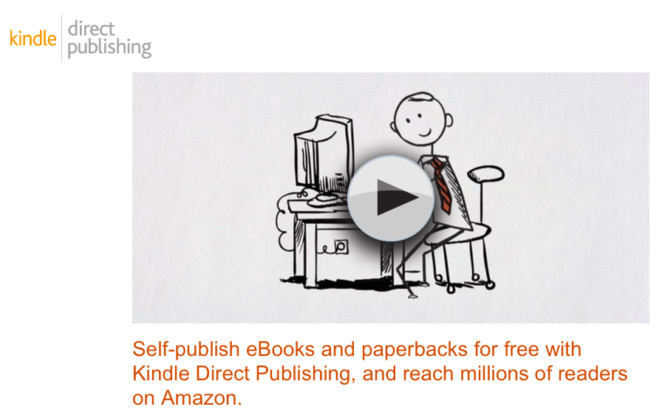



9 thoughts on “How to Write, Publish, and Sell an eBook: The Guide to Becoming an Authority in Your Niche Through Book Authorship”
it’s a good article for reading and learning.
Hi, very nice article. Please keep it up.
Really useful, Thanks
Thank you for writing such an helpful article. I want to become a professional book writer and I have noted down these tips for my future career.
I really like your article. It’s evident that you have a lot knowledge on this topic. Your points are well made and relatable. Thanks for writing engaging and interesting material.
This is a very useful post and relevant post. Thanks for this post. Keep blogging.
Kimgarst is the BEST BLOG in the creating e-books, I read it practically every day.
Great stuff. You talked me into it. Thank you
Glad to know that, David.